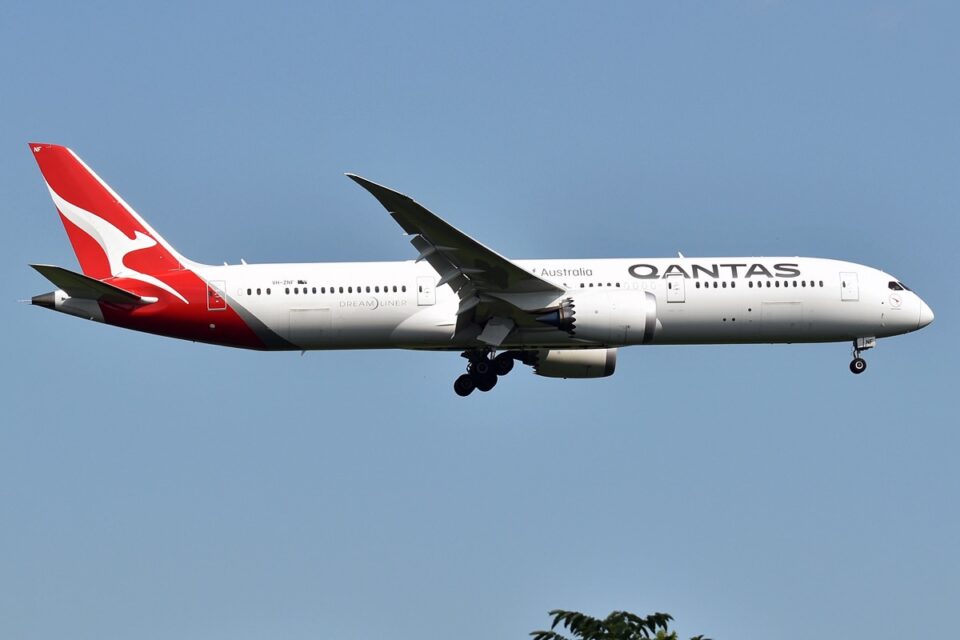Airlines
Qantas says cost to fly may rise, Due to Soaring Jet Fuel Prices

Qantas has been absorbing a $200 million increase in fuel costs, the airline warned that if prices continue to rise, the costs may be passed on to customers and it may raise its already high ticket rates.
The airline reported in a market update that fuel costs have gone up 30% since May of this year, including 10% just in the past month. “This is driven by a combination of higher oil prices, higher refiner margins, and a lower Australian dollar,” Qantas stated.
Boeing warns new defect on 787 Dreamliners will slow deliveries(Opens in a new browser tab)
But Qantas asserted that it will keep an eye on fuel costs in the upcoming months and “look to adjust its settings” if they continue to be this high. Any modifications would aim to strike a balance between the need for reasonably priced travel in a situation where tickets are already high, according to Qantas.
Qantas and competing airlines use methods of hedging to control erratic pricing changes. An effort to win back consumer support that included an apology from the airline’s new CEO, Vanessa Hudson, and a commitment to rebuild the airline’s reputation after a “humbling period” is in jeopardy as a result of the warning about ticket prices.
Analyst Owen Birrell with RBC Capital Markets predicted that the firm will likely accept the higher fuel costs “until its target margins come under pressure, and then would seek to claw back those costs through capacity cuts and higher fares.”
Given the increased competition, expanding consumer and corporate cost pressures, and incoming reinvestment in the product/platform, we don’t think a substantial earnings shift is possible going forward.

Airlines
Air India Rolls Out A350s for Delhi-New York JFK and Newark Routes

In a major development for North American travelers, Air India has announced the deployment of its state-of-the-art Airbus A350-900 aircraft on two key routes: Delhi to New York and Delhi to Newark.
The service on the Delhi-New York route will commence on November 1, 2024, while the Delhi-Newark route will see its inaugural flight on January 2, 2025.
The introduction of the air india a350 will bring significant enhancements to Air India’s offerings, particularly with the launch of its Premium Economy class. air india retrofit This new class will feature 24 wide seats arranged in a 2-4-2 configuration, providing passengers with extra legroom and a more comfortable flying experience.
Soon, Air India aircraft will feature onboard WiFi & all-new cabins: Click here
“We are encouraged by the positive guest feedback we have received from the domestic deployment of our air india a350 interior to offer our hero product on the Delhi-New York JFK and Delhi-Newark routes. This is a significant leap forward for our U.S. operations that also underscores our commitment to continuous improvement,” said Campbell Wilson, Chief Executive Officer & Managing Director of Air India.
The A350’s Business class will set new standards with 28 private suites, each equipped with full-flat beds, direct aisle access, and personal wardrobes. Economy class will be configured to accommodate 264 passengers in a 3-4-3 layout. Across all cabins, passengers will enjoy the latest Panasonic eX3 in-flight entertainment system, offering over 2,200 hours of content.
Air India’s First A350-900: Interior, Routes, &Inflight Features: Click here
This strategic deployment marks a notable enhancement in Air India’s U.S. operations, with 60% of its flights to the U.S. now featuring new or upgraded cabin interiors. The air india new international routes currently operates 51 weekly flights to five U.S. destinations: New York JFK, Newark, Washington DC, Chicago, and San Francisco.
The revamped cabins, advanced in-flight entertainment systems, and improved service standards represent air india wifi commitment to providing a superior travel experience. “We believe this enhanced offering will solidify Air India’s position as a leading carrier and attract travellers seeking a world-class flying experience between India and the United States,” the airline stated.
Seats on these flights are now available for booking on Air India’s website, mobile app, and through travel agents, ensuring that passengers can easily plan their journeys on these newly upgraded routes.
Air India Economy vs Qatar airways economy: which is best?:Click here
-

 Travel1 week ago
Travel1 week agoAir India to Expand US Operations with Three New Routes After a Decade
-

 Travel2 weeks ago
Travel2 weeks agoWhy We Should Avoid These Stamps in a Passport
-

 Airlines1 month ago
Airlines1 month agoInvestigations Reveal Fake Chinese Titanium in Boeing and Airbus Jets
-

 Tech4 weeks ago
Tech4 weeks agoChina’s CATL Plans 1,800-Mile Electric Plane Launch by 2027
-

 Airport3 days ago
Airport3 days agoTop 10 Largest Airports in the World by Size
-

 Aerospace4 weeks ago
Aerospace4 weeks agoChina’s Fighter Jets Turn Wings into Autonomous Drones
-

 Airlines4 days ago
Airlines4 days agoAir India Rolls Out A350s for Delhi-New York JFK and Newark Routes
-

 Defence3 weeks ago
Defence3 weeks agoBoeing Enhances Chinook with New Engines and Block II Upgrades at $96 Million







